How To Hold A Ping Pong Paddle?
Discover the secrets to mastering the perfect ping pong paddle grip and elevate your table tennis game to new heights. Whether you're a novice or a seasoned player, the right grip can unlock your full potential on the table.
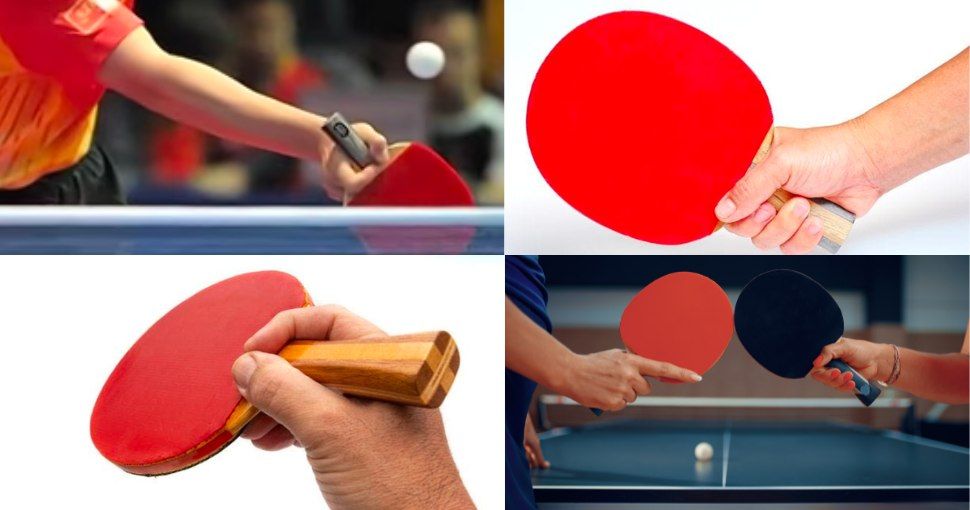
Have you ever held a ping pong paddle like a hot potato during a heated match? Fear not, fellow table tennis enthusiasts, because today, we're diving deep into the enchanting world of paddle grip wizardry.
How to hold a ping pong paddle? Like a pro, of course!
But why should you keep reading? Because in this article, we'll demystify the art of paddle handling, unleashing tips, and techniques that'll transform you from a flimsy grip rookie into a ping-pong paddle maestro.
Whether you're a casual player or aspiring to be the next ping-pong sensation, learning the right way to grip that paddle can make all the difference in your game. So, let's embark on this whimsical paddle-holding journey and serve up some invaluable knowledge!
How to Hold a Table Tennis Racket
1. Choose Your Grip: There are two primary grip styles: the Shakehand grip and the Penhold grip.
Shakehand Grip: Hold the racket as if you're shaking someone's hand. Place your thumb on the backhand side of the blade, and let your index finger rest on the rubber side. The other fingers wrap around the handle.
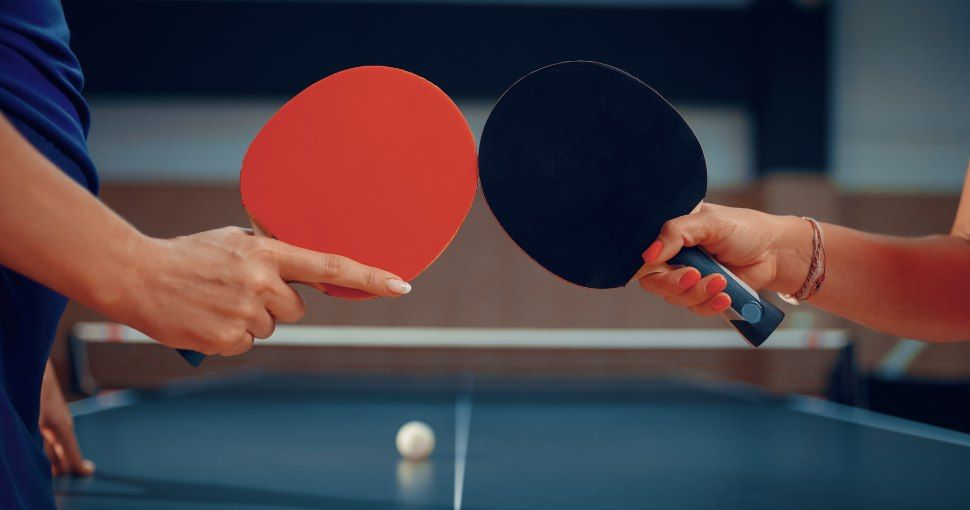
Penhold Grip: Hold the racket as if you're holding a pen. Grip the handle with your thumb and index finger, while the remaining fingers curl around the back of the handle.
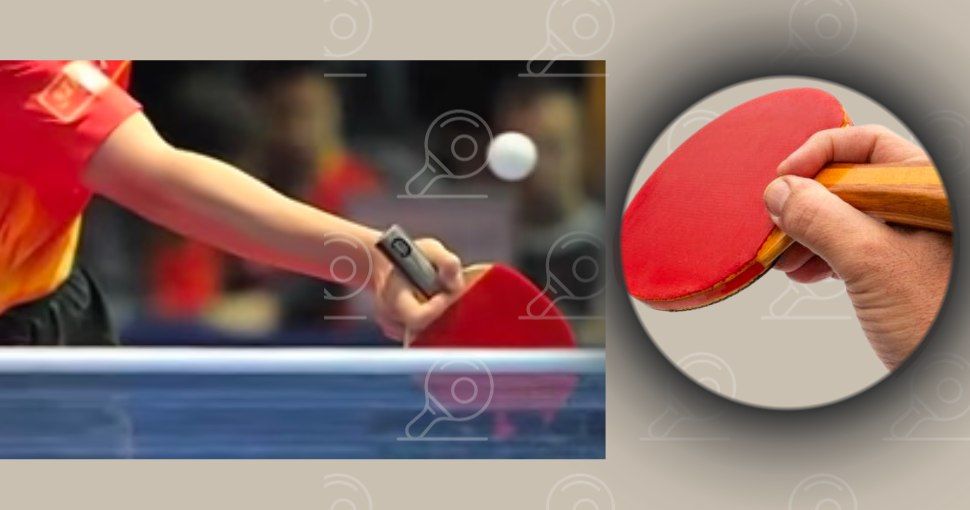
2. Hand Position: For the Shakehand grip, your hand should be relaxed, with the fingers loosely gripping the handle. The index finger should be slightly extended.
For the Penhold grip, your thumb and index finger form a loose circle around the handle, while the other fingers are relaxed.
3. Maintain a Relaxed Grip: Avoid squeezing the racket handle too tightly. A relaxed grip allows for better wrist movement and control.
4. Find the Right Balance: Balance the racket in your hand, ensuring it feels comfortable and well-centered. The weight distribution should feel even.
5. Adjust for Comfort: Experiment with minor adjustments to find the grip position that feels most comfortable and natural for your playing style.
6. Practice and Adapt: As you practice, you may refine your grip to suit your playing style and comfort level. Consistent practice will help you develop a firm yet relaxed grip.
7. Maintain Flexibility: Keep your wrist flexible to execute various shots with ease. Your grip should allow for quick adjustments during play.
Why It’s Important to Choose the Right Grip
Choosing the correct grip in table tennis is crucial for several reasons:
- Control: The grip directly influences your control over the racket. A proper grip allows you to direct the ball precisely and place it where you intend, whether it's a powerful smash or a delicate drop shot.
- Power: A correct grip enables you to generate power when needed. With the right grip, you can unleash strong shots and aggressive plays without straining your hand or wrist.
- Spin: Table tennis relies heavily on spin variations to confuse opponents and control the game. The grip plays a vital role in producing the desired spin on the ball.
- Consistency: Consistency is key to winning in table tennis. A proper grip helps you maintain consistent shots and keep rallies going with precision.
- Injury Prevention: Using the correct grip minimizes the risk of injury. A relaxed grip reduces strain on the hand, wrist, and arm, preventing overuse injuries.
- Adaptability: Different situations call for different shots and techniques. A flexible grip allows you to adapt quickly to various playing styles and opponents.
- Comfort: Playing with the right grip is more comfortable and less tiring over extended matches. It allows you to focus on your game rather than discomfort or strain.
Different Types of Ping Pong Grips
There are primarily two types of ping pong grips: the Shakehand grip and the Penhold grip. Each grip style has its variations, and the choice between them depends on personal preference and playing style. Here's an overview of these two main grip types and some of their variations:
1. Shakehand Grip
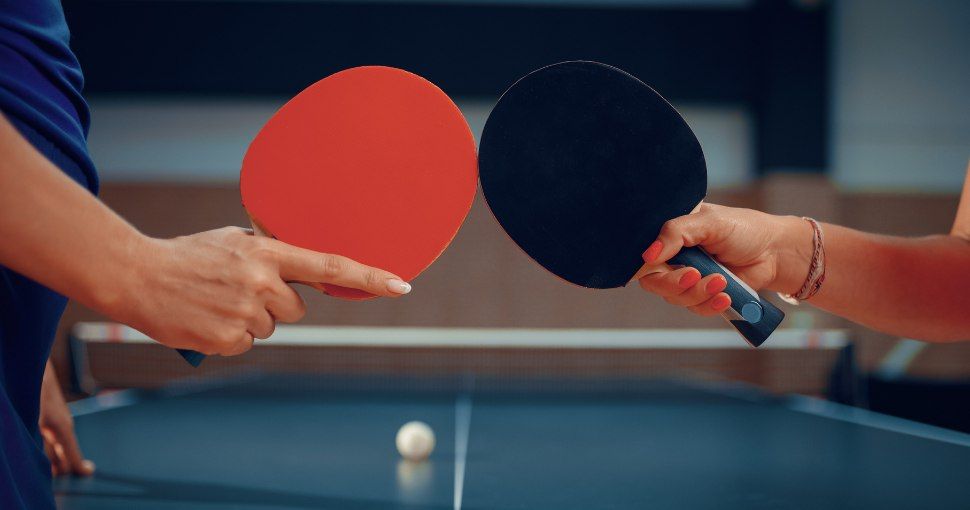
- The Shakehand grip is the most common and widely used grip style in table tennis.
- Shakehand Forehand Grip: The player holds the racket handle like shaking hands with someone. The thumb rests on the backhand side of the blade, and the fingers wrap around the handle. The index finger typically points down the handle.
- Shakehand Backhand Grip: When switching to the backhand side, players may rotate their wrists slightly to allow the backhand rubber to face the opponent. The index finger may point up the handle or remain in a similar position.
2. Penhold Grip
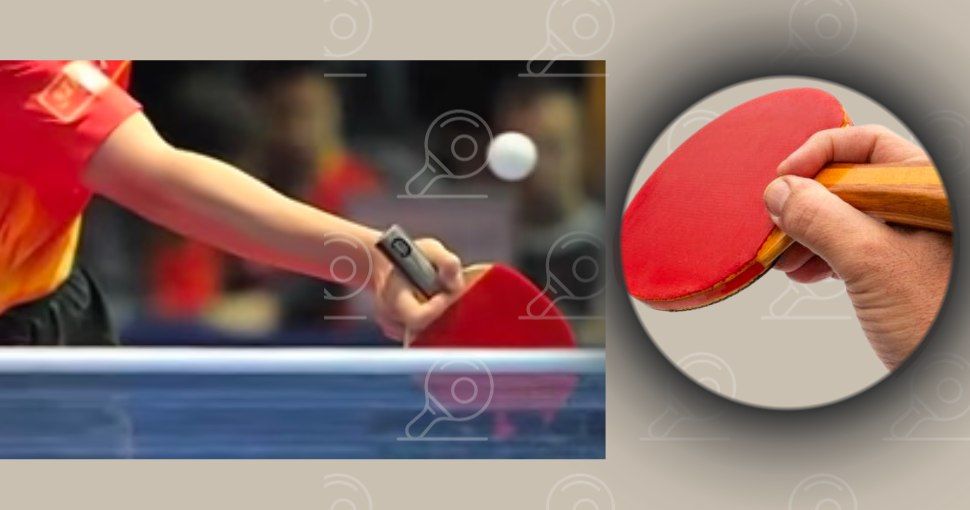
- The Penhold grip is less common but has loyal followers, especially among Asian players.
- Traditional Penhold Grip: The player holds the racket as if holding a pen, with the thumb and index finger pinching the handle's top. The other fingers rest against the blade's backside, offering less flexibility for the backhand side.
- Reverse Penhold Backhand (RPB) Grip: Some Penhold players use the RPB grip, which involves using the backhand rubber for both forehand and backhand shots. This grip allows for greater versatility on both sides of the racket.
3. Seemiller Grip: Seemiller Grip was developed by Dan Seemiller, an American table tennis champion. The Seemiller grip is a hybrid between the Penhold and Shakehand. It involves pinching the handle with the thumb and index finger and wrapping the remaining fingers around the handle.
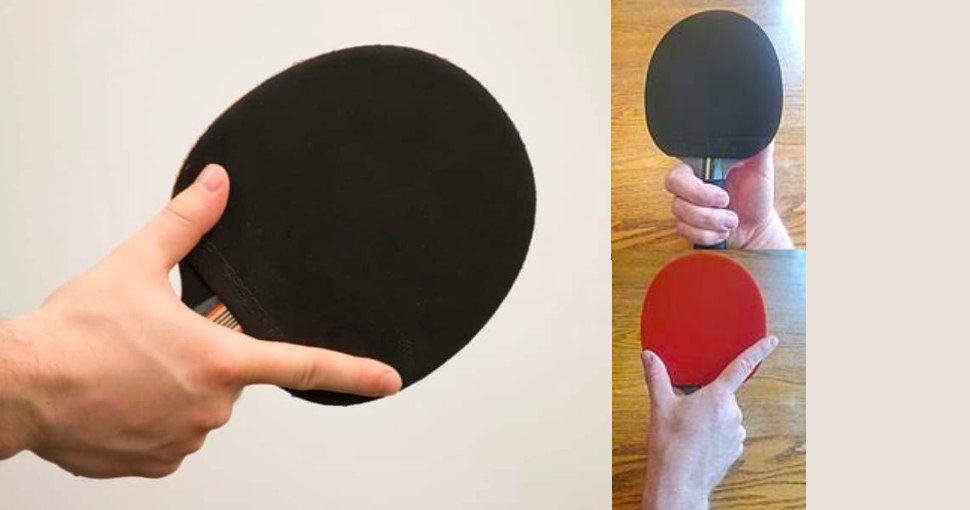
It's awkward to hit shots using a standard handshake backhand, using the opposite side of the racket. So, instead, Seemiller grip players hit their backhands with the same side of the racket as they used to hit their forehands, turning their wrists over the way a baseball player would make a backhand catch, and typically blocking or counter-hitting the ball.
The Seemiller grip is a unique variation where the player holds the racket with the index finger stretched along the racket's back, allowing access to both sides of the paddle. This grip is named after American player Dan Seemiller, who popularized it.
4. V-Grip: The V-Grip is a hybrid grip that combines aspects of the Shakehand and Penhold grips. Players hold the racket handle in a V shape, allowing for more flexibility in wrist movement and versatility in shot selection.
These grip styles each have their advantages and are suitable for various playing styles. The choice of grip ultimately depends on your comfort, the types of shots you want to execute, and your overall playing style.
Common Handle Styles
- Flared Handle:
- The flared handle is the most popular and widely used handle style. It has a thicker base that flares out at the bottom, providing a comfortable grip while preventing the paddle from slipping out of the hand during play.
- It suits players who prefer a secure grip and versatility in their playing style, as it allows for both forehand and backhand shots.
- Anatomic Handle:
- An anatomic handle is designed to fit the contours of the hand, offering a comfortable and ergonomic grip. It is narrower in the middle and wider at both ends, conforming to the natural shape of the palm.
- This handle style is favored by players who prioritize comfort during extended matches and rallies.
- Straight Handle:
- The straight handle is a simple and traditional design that runs straight from top to bottom. It provides a consistent and balanced grip.
- Some players prefer the straightforward feel of the straight handle, which can be especially useful for precise shots.
- Conical Handle:
- The conical handle tapers gradually from top to bottom, resembling an inverted cone. It allows for flexible hand movement and a variety of grip positions.
- Players who use the conical handle appreciate the ability to adjust their grip easily and adapt to different playing situations.
- Legend (C-Pen) Handle:
- The Legend or C-Pen handle style is commonly associated with Penhold grip players. It has a unique design that offers a secure grip for Penhold players who use one side of the paddle and their thumb on the back.
- This handle style is designed specifically for the Penhold grip, a popular choice in Asian table tennis.
- Hexagonal Handle:
- The hexagonal handle is a less common but distinctive handle style. It features six flat sides, providing a secure and comfortable grip.
- Some players find the hexagonal handle style appealing for its unique look and feel.
- Octagonal Handle:
- The octagonal handle is similar to the hexagonal handle but with eight flat sides. It combines a secure grip with a stylish and unique design.
- This handle style is often chosen for its aesthetics and comfort.
FAQs
How To Hold A Ping Pong Paddle?
Q: What is the professional way to hold a ping pong paddle?
Q: How do Chinese hold a ping pong racket?
Answer: Chinese table tennis players predominantly use the Penhold grip, distinct from the Shakehand grip commonly used by players from other regions. The Penhold grip is so named because it resembles holding a pen, with the thumb and index finger pinching the handle's top.
- Positioning the Thumb and Index Finger:
- The player starts by positioning the thumb and index finger on the racket's handle. The thumb is placed on one side of the handle, while the index finger rests on the opposite side.
- Middle Finger Placement:
- The middle finger and sometimes the ring finger or additional fingers (depending on the player's preference) are curled around the handle's back. These fingers provide support and stability.
- Forefinger Extended:
- The forefinger is usually extended along the racket's rubber surface or angled toward the backhand side of the racket. This extended forefinger allows for added control and precision in the player's shots.
- Backhand Side:
- When executing backhand shots, the player may pivot their wrist slightly to allow the backhand rubber to face the opponent. This allows for a more natural and effective backhand stroke.
- Variations:
- There are variations of the Penhold grip used by Chinese players, including the traditional Chinese Penhold grip and the Reverse Penhold Backhand (RPB) grip. The RPB grip involves using the backhand rubber for both forehand and backhand shots, enhancing versatility.
Q: Which way do you hold a table tennis racket?
Q: Which side of a ping pong paddle is what?
Answer: A ping pong paddle, also known as a table tennis racket, consists of two main sides: the rubber-covered side and the blade side. These sides serve different purposes in the game of table tennis:
- Rubber-Covered Side (Forehand Side):
- The rubber-covered side of the ping pong paddle is also referred to as the "forehand" side. This side typically has a colored or black rubber sheet attached to it.
- Players use the rubber-covered side for their forehand shots, which are typically more powerful and controlled. The rubber sheet may have different characteristics, including varying levels of grip, speed, and spin, allowing players to customize their forehand shots.
- Blade Side (Backhand Side):
- The blade side of the ping pong paddle is the side without rubber covering. It consists of a wooden or composite blade, which is the foundation of the racket.
- Players use the blade side for their backhand shots, which may involve more finesse and precision compared to forehand shots.
- Some players, particularly those who employ the Penhold grip or certain grip variations, may use the blade side for their forehand shots as well. However, this is less common in modern table tennis.
Q: What are the 4 basic strokes in table tennis?
Answer: In table tennis, there are four fundamental strokes that every player should master to excel in the game. These basic strokes are essential for controlling the ball and executing various shots effectively.
- Forehand Drive (Forehand Topspin):
- The forehand drive is a controlled, offensive shot played with the forehand side of the racket.
- Players use a slightly closed racket angle to brush the ball's top surface, imparting topspin.
- It is a versatile shot used for both attacking and defending, offering control and placement.
- Backhand Drive (Backhand Topspin):
- The backhand drive is a similar shot to the forehand drive but executed on the backhand side.
- Players use the backhand side of the racket to generate topspin and control.
- It complements the forehand drive and is crucial for a well-rounded game.
- Forehand Push (Forehand Slice):
- The forehand push is a defensive shot played with the forehand side of the racket.
- Players use a slightly open racket angle to slice the ball, creating a backspin.
- It is primarily used for returning low, backspin serves and pushing the ball short over the net.
- Backhand Push (Backhand Slice):
- The backhand push is the equivalent of the forehand push but executed on the backhand side.
- Players use the backhand side of the racket to produce backspin and control.
- It is essential for handling backspin serves and maintaining rallies.
Key Takeaways!
Mastering the art of holding a ping pong paddle is a fundamental step toward improving your table tennis game. The right grip ensures control, power, and precision in your shots, ultimately leading to better performance on the table. Whether you choose the Shakehand or Penhold grip, finding a comfortable and consistent grip style that suits your playing style is essential. With practice and the correct grip, you'll be well on your way to becoming a skilled and competitive table tennis player. So, grip it right and let your paddle lead you to ping-pong glory!
Articles You Might Be Interested!
- Unleashing the Ping Pong Game: A Journey into the Heart of Table Tennis
- Ping Pong Balls You Need to Up Your Table Tennis Game!
- Reasons Owning a Ping Pong Table Will Be Your Best Purchase
- Discover the World of Portable Ping Pong On-the-Go Excitement!
- Unleash Your Inner Ping Pong Champion: Exploring the Game's Thrills & Tricks
